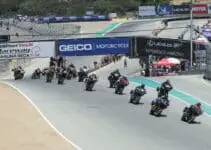Mortality rates at lambing on Tim and Richard Sheil’s farm on the Wexford/Carlow border were greatly reduced this year, which the brothers attribute to vaccination.
ll ewes were vaccinated for toxoplasmosis prior to going to ram after issues in previous years with some ewes aborting.
The ewe flock of 261 began lambing on March 19 as planned, with all lambed within a five-week period. There were no major issues or disease outbreaks on the farm at Coolree, 3km from the village of Kiltealy in the shadow of the Blackstairs Mountain.
In all 48 lambs were lost, which represents a 10pc loss from scanning. The target for relatively high litter sizes is generally to keep this figure under 12pc.
Richard says: “I’m delighted we took the decision to vaccinate for toxoplasmosis after getting a positive diagnosis during last year’s lambing.
“Mortality was greatly reduced and lambing difficulty seemed to be reduced also.”

The brothers in the fields
The Sheils’ straw blower made supplying adequate bedding a much easier task for both lambing pens and group pens during the housing period, so this was done more often, and hygiene was improved.
This too appeared to help with health issues.
“Ewes were good on their feet prior to housing and that carried right through until turnout,” says Tim.
“All individual lambing pens were cleaned out after each ewe. Definitely being generous with the straw during the housing/lambing period has worked really well.”
150 bales of barley straw are already in reserve on the farm from last year’s harvest, so little additional straw will be required for next winter; the brothers hope this will allow for additional straw sales in 2022.
Ewes and lambs are grazing in four smaller groups but will be put into larger groups this week to help put grazing pressure on paddocks and aid grass management.
The plan is to move sheep groups on from each paddock/field after 3-4 days grazing to help maximise grass regrowth.
There is no meal being fed to the lambs at present; depending on grass supply and performance later in the grazing season, a finishing group of lambs may be assembled to help target meal to more forward lambs.
This will help keep concentrate supplementation to a minimum, while maximising conversion rates.
Lambs have been treated for Nematodirus worms and coccidia, and have got their first clostridial vaccinaction.
Grass growth has really taken off on the farm recently and 14ac of first-cut silage is planned for Thursday, May 26. The plan is to harvest around eight bales/ac of high-quality silage, around 75DMD.
Some second cut may also be planned later in the season to safeguard winter fodder.
After doing a fodder budget, Tim and Richard estimate that they need around 200 bales of silage to be comfortable for next winter, based on every 100 ewes requiring 20 bales of silage fresh weight per month.
There are also 60 bales of hay on the farm as a buffer.
27 pet lambs are also being reared artificially. They have recently been weaned off milk replacer and are now on ad lib meal.

There is no meal being fed to the lambs at present
Previously these lambs, once weaned from milk replacer, would have been let out to grass and sold later in the season, but performance in this system was variable.
This year the decision has been made to finish them indoors on ad lib meal and cash in on a high lamb price in the not too distant future.
The vast majority of hoggets carried on the catch crops following the farm’s tillage enterprise have now been slaughtered, with most carcass weights 21.5-23kg — an average kill-out of 46pc across male and female lambs.
Shearing of the ewes is also planned, and the lambs will get a treatment of Clik extra to give 19 weeks’ protection against flystrike. This is done annually on the farm and gives great peace of mind when Tim and Richard are working off farm
All grazing fields have received one bag of 18-6-12/ac and half a bag of protected urea/ac to date. If grazing days ahead continue to increase, some paddocks may be removed as surplus bales, along with the main first cut next week.
Some reseeding is also planned in the coming weeks.
As lambs start to consume more grass in the coming weeks, attention will turn to controlling gut worms — there have been some issues in the past with resistance to certain anthelminthic groups.
It is planned to carry out a faecal egg reduction test on different wormers to establish what is working well, then come up with a plan to safeguard its efficacy into the future
James Doran is a Teagasc drystock advisor based in Enniscorthy


